Introduction
Lighting trends are shifting towards automated systems that are aware of your presence to light your way. Known as smart lighting, these systems are becoming a big deal in homes, offices, and factories. They make places look better and bring many perks like saving energy, making things safer, and being more convenient for users. Because of these advantages, the market for smart lighting is expected to hit a whopping $46.79 billion by 2029, growing at a CAGR of almost 19% every year from 2024 to 2029.

Thanks to AI technology, smart lighting is booming. AI-powered smart lights can learn and adjust to how we behave, what we like, and the environment around us. They can change light levels, colours, and patterns in real time. This smart control not only saves energy but also improves our experience.
In this article, we’ll explore the many ways AI-powered smart lighting is used, its benefits, and the future trends in this field while considering the challenges. Let’s get started.
Lights Controlled By Computer Vision
Imagine the lights adjusting automatically to your activities at home, all without lifting a finger. It’s now a reality with computer vision. Computer vision, a subfield of AI, is key to smart lighting systems. It’s like having a smart eye that sees motion and presence in homes, making them safer and more energy-efficient. Unlike simple systems that merely detect movement, computer vision can understand the context within a room, such as whether you’re watching a movie or falling asleep, and adjust lighting accordingly. In retail and entertainment, computer vision creates fun, interactive displays that react to our movements, making the experience more enjoyable.
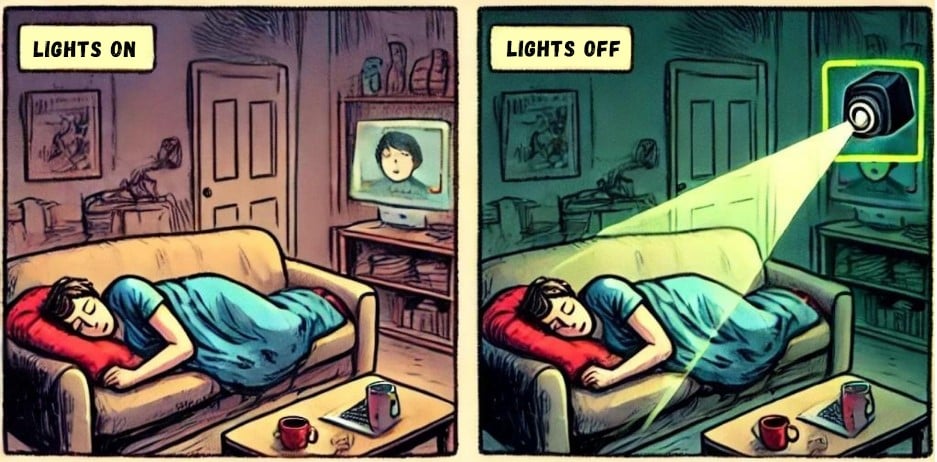
AI in manufacturing and warehouses is a good example here. Computer vision can help sort packages quickly and accurately based on their size and shape, allowing for fewer mistakes and faster operations. For example, in automated warehouses and factories, computer vision adjusts lighting and focus settings to spot and sort packages of all sizes on conveyor belts. Such smart tech helps improve efficiency and cuts down on errors, making life simpler.
Generative AI in Cinematography
Shooting movies in low light can be tricky and often results in footage that’s grainy or lacks detail. Generative AI is changing that by helping filmmakers manage lighting more effectively in post-production. After the footage is shot, generative AI comes into play again during the editing phase. It can brighten up dark spots, clarify details, and clean up noise in the footage.
The AI does this by analysing the filmed scenes and applying enhancements that maintain the natural look of the movie. Sophisticated algorithms that have been trained on a diverse set of video data, allow them to understand various lighting conditions and how they affect video quality. The visual quality of the footage is improved without the extra time and expense of manual adjustments or reshoots. Also, the edits that are made are done in a way that aims to keep the integrity and artistic intent of the footage, so that any modifications look seamless.
GPU Acceleration at Light Shows
For AI-powered smart lighting systems to work effectively, we need to use quite a bit of computational power. GPU acceleration can step in here. GPU acceleration is making smart lighting systems much faster which allows them to process more data in real time without latency. Such hardware acceleration is useful, especially when it comes to handling lights in large events. For example, at events with impressive light shows, GPU acceleration helps create amazing visual displays with cool effects.
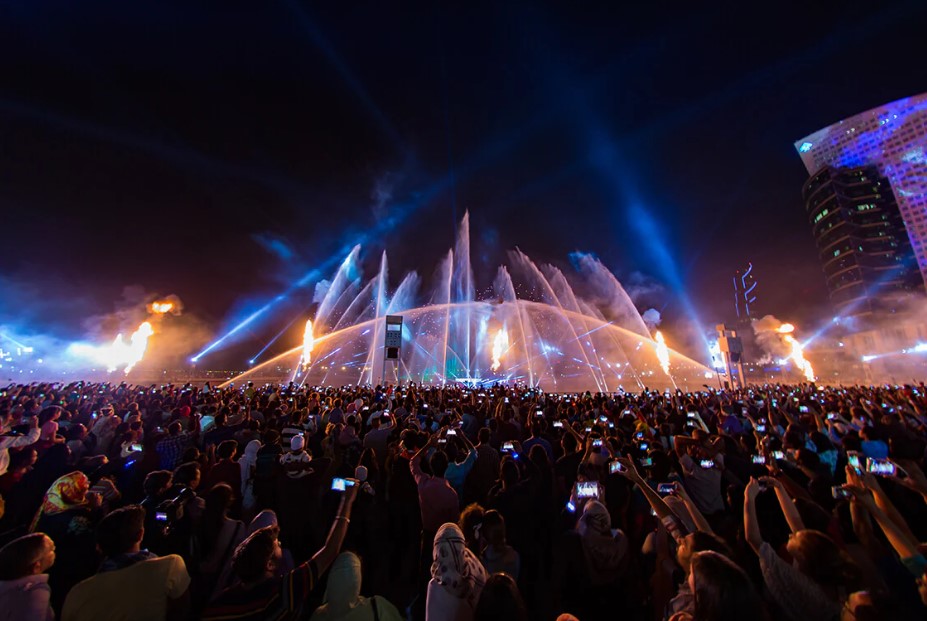
Take the IMAGINE show in Dubai Festival City, for instance. This huge show uses powerful lasers and lots of light to create a big, sensory experience. They use GPU acceleration to manage and create complex light patterns and effects quickly and smoothly, which makes the show run without glitches.
In places like commercial buildings and factories, GPUs are also important because they help speed up how fast cameras and other systems process images. It is useful for security measures, checking product quality, or monitoring equipment. Using GPUs means these tasks can be done faster and more efficiently.
Smart Lighting Solutions at the Edge
IoT Edge Computing helps manage energy use in commercial buildings by analysing data right where it’s collected. By using such methods, users can automate the monitoring of energy usage and make immediate changes to the lighting based on what’s needed at the moment.
For instance, sensors in light fixtures gather information about how many people are in a room, the natural light available, and what lighting preferences users have. The information is then processed right there by the devices (that’s the “edge” part), which lets the lighting system adjust the brightness and timing of teh lights instantly based on actual conditions. It also ensures privacy by locally processing all the data and not sending it to the cloud. Such a smart system cuts down on wasted energy by almost 60%, saves money, and is better for the environment.
In Mexico City, smart lighting that uses IoT Edge Computing has made public spaces like parks and transit areas not only brighter but also safer than before. Better lighting has increased security, making it more comfortable for people to walk and travel at night.
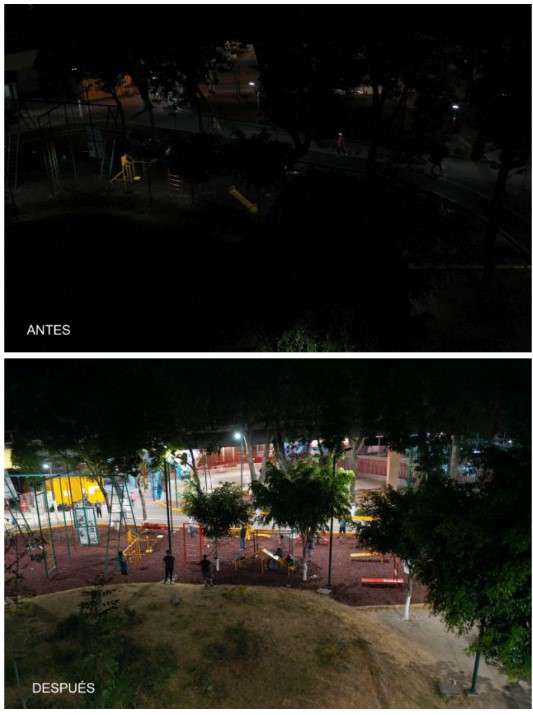
IoT Edge Computing also helps handle these smart lighting systems from afar. It allows facility managers to access lighting controls and monitor the system’s health remotely. They can spot and fix problems before they become bigger issues, which saves money on maintenance and makes the systems more reliable.
Voice-Activated Smart Lighting Systems
AI techniques like Natural Language Processing (NLP) can be used to create voice-activated smart lighting) systems. By using NPL’s language understanding capabilities, you can turn lights on or off and change their settings with a simple voice command.
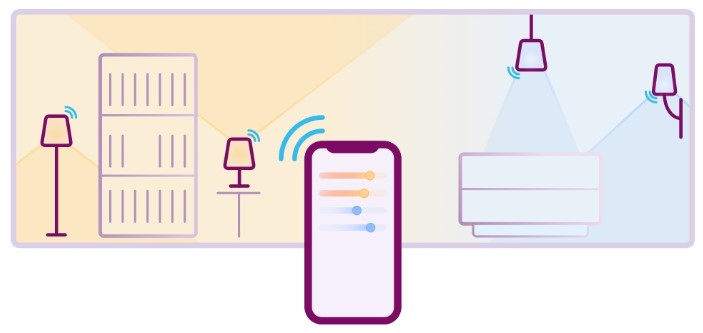
In homes with smart lights, you can also talk directly to devices like Amazon Alexa or Google Assistant to adjust the light’s brightness or colour. Such a hands-free option helps you interact with your lights smoothly, letting you set the mood you want in your home easily. These smart lights work well with these voice assistants. You can connect your lights to systems like Alexa or Google Assistant, blending them into your smart home setup. Such technology is especially useful for users with mobility issues who may not be able to reach switches or use remote-controlled light bulbs comfortably.
Immersive Lighting Experiences with AR/VR Technology
When it comes to computer-generated simulations and games, ultra-realistic lighting makes all the difference. The better the lighting conditions in virtual worlds, the better the immersive experience. AR/VR technology can be used to create and use such lighting in games, entertainment, and training across different fields.
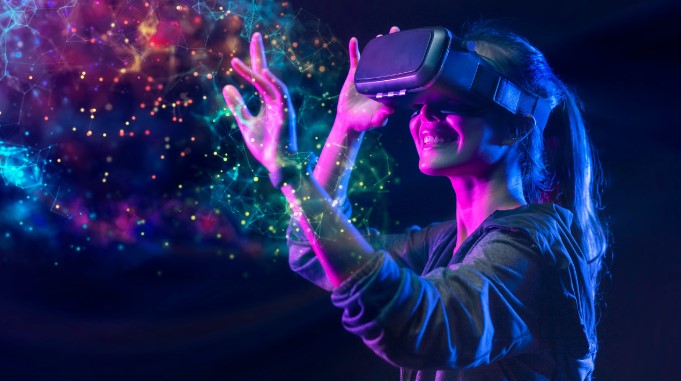
When it comes to gaming and entertainment, AR/VR technology can be used for dynamic lighting and sounds to make players feel like they are really inside the game. These detailed and lifelike lighting effects in games can help make the virtual experiences more vivid and enjoyable.
For training simulations in various industries, AR/VR also plays a big role. It can mimic real-life lighting situations which helps in creating training sessions that feel more real. The training is more effective because trainees can practise tasks in settings that closely match their actual work environments. Methods like these can improve learning and help trainees develop skills safely and efficiently, without the risks of real-world training.
Benefits of AI-powered Smart Lighting
AI-powered smart lighting is changing how we light up our spaces, and it’s bringing lots of great benefits along with it.
Beyond financial savings, AI-driven lighting has a notable impact on improving workplace health and well-being. Lighting levels play a crucial role in employee health as proven by a study by the NHS that found 86 million workdays are lost per year in the UK due to migraines. By automatically adjusting factors like glare from computer screens, smart lighting can create a more comfortable environment that supports employee health and increases overall productivity.
Environmental sustainability is also another benefit of AI in lighting technology. Smart LED lights adjust their brightness based on the availability of natural light and the presence of people. By doing so, these systems lower energy consumption and also help in reducing the carbon footprint. These are crucial factors for the sustainable construction sector and other eco-conscious industries.
Also, AI-powered lighting offers many customisation options to users. It allows for adjustments in colour temperature, the creation of dynamic lighting scenes, and the scheduling of lights according to personal or business needs. Such a level of personalisation ensures that lighting can adapt to different moods, tasks, or times of day, enhancing both the functionality and aesthetics of a space.
Demonstration of a personalised smart light system that has a colour-changing light bulb | Source: Pinterest
In summary, AI-powered smart lighting offers a lot of benefits that enhance cost efficiency, workplace health, environmental sustainability, and personalisation. All of this makes it a compelling choice for anyone looking to improve their lighting systems with advanced technology.
Challenges Related to AI-powered Smart Lighting
While AI promises exciting advancements in smart lighting systems, it also presents some obstacles. Privacy concerns, installation costs, and hardware compatibility raise concerns about security and reliability. To address these challenges, new, cheaper, and secure models that are compatible with diverse devices are needed.
Aside from this, improperly trained AI systems may also cause problems like bias, requiring careful design and training. Addressing these challenges is crucial and complex. Turning to an expert may light up the way to develop and use smart lighting technology responsibly, and that’s where TechnoLynx can lend a hand.
What We Can Offer as TechnoLynx
At TechnoLynx, we specialise in custom software development. We strive to deliver custom, innovative solutions specifically tailored to handle the unique challenges posed by implementing AI technologies. We offer precise AI-driven software solutions to answer your specific business needs. We know the difficulties of including AI in traditional infrastructure and are equipped to address all of your concerns.
Our expertise in generative AI, computer vision, IoT edge computing, GPU acceleration, Natural Language Processing, and AR/VR technologies covers not just AI capabilities but also ensuring security, managing and analysing extensive data sets, and addressing compatibility concerns. We are all about improving how your business works and helping you achieve great results with straightforward AI consulting. Let’s get in touch and see what we can do together!
Conclusion
Smart lighting powered by AI is transforming how we illuminate our spaces. These systems, found in homes, offices, and public areas, not only save energy but also enhance safety, comfort, and convenience. Looking ahead, challenges such as privacy and compatibility need to be addressed. However, companies like TechnoLynx specialise in custom AI solutions for smart lighting, offering solutions to these challenges.
In summary, AI-powered smart lighting is creating a future where lighting is intelligent, responsive, and personalised to individual needs. Such a technology holds great promise, lighting up the way ahead for further advancements.
Sources for the images:
-
Adatis (2023) Virtual Reality
-
Dubai Festival City Mall (n.d) Laser Show in Dubai
-
Mordor Intelligence (2023) Smart Lighting Market.
-
Philips (n.d.) Voice Controlled Smart Lights.
-
Pinterest (n.d.) The Best Smart LED Light Bulbs
-
Qualcomm (2021) Smart Lightings used in Mexico Park
-
Smart Home Solver (2024) Best Smart Lights
References:
-
Dubai Festival City Mall. (2024). IMAGINE DUBAI.
-
Kinney, S. (2021) Intelligent Lighting Brings Machine Vision to New Heights. Photonics Spectra
-
Kriaras, N. (2022) Smart Lighting Set to be Revolutionised by AI Technology. EGG Lighting.
-
Ma, W. (2021) How Juganu’s Smart Lighting Paves the Way for the Smart Cities of Tomorrow. Developer Blog
-
Mordor Intelligence. (n.d.) Smart Lighting Market.
-
Natephra, W., Motamedi, A., Fukuda, T. et al. (2017) ‘Integrating building information modeling and virtual reality development engines for building indoor lighting design’, Visualization in Engineering, 5(19).
-
Nnoli, I. (2024) ‘Generative AI for Digital Humans and New AI-powered NVIDIA RTX Lighting’, NVIDIA Developer Blog
-
Philips Lighting. (n.d.) Philips Smart Light.












